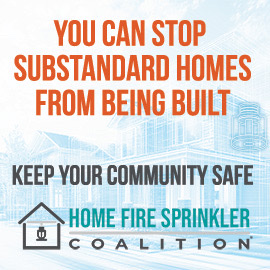
FEMA updates mitigation planning policy guides with enhanced codes focus
State and local mitigation plans required for FEMA funding include focus on building codes in mitigation strategies
In April 2022, the Federal Emergency Management Agency (FEMA) updated its State and Local Mitigation Planning Policy Guides. The state and local mitigation plans developed under the guides and approved by FEMA are required for eligibility under several FEMA supported grants.
The guides are FEMA’s policy interpretations of mitigation planning requirements established by the Robert T. Stafford Disaster Relief and Emergency Assistance Act and federal regulation Title 44 CFR Part 201- Mitigation Planning. These policies form the foundation of a community’s long-term strategy to reduce disaster losses and repetitive damage, while enhancing community resilience. The updates to FEMA’s policy guides underline the value of mitigation planning and align with the agency’s strategic priorities of planning for climate change, future conditions and equitable outcomes. The policy updates are intended to streamline state and local hazard mitigation planning. One of FEMA’s key objectives is connecting mitigation planning with community planning, and effectively implementing modern building codes.
FEMA’s State and Local Mitigation Planning Policy Guides aim to promote disaster-resilient and sustainable communities through strategic partnerships and a commitment to long-term, risk-informed planning. The guides also support integration with the newly established FEMA Building Codes Strategy, recognizing the essential role modern building codes play in mitigating risk and enhancing community resilience. The guides support integration with FEMA programs, including the Building Resilient Infrastructure and Communities (BRIC) program, Hazard Mitigation Grant Program (HMGP) Post-Fire, and the Flood Mitigation Assistance (FMA) program.
Separately, FEMA’s State Mitigation Planning Policy Guide offers standard and enhanced compliance pathways for community hazard mitigation plans. Enhanced plans demonstrate a sustained, proven commitment to hazard mitigation and, as a result, qualify states for increased HMGP funding. The State Policy Guide now requires building codes be addressed in all standard plans, including enforcement activities. The state must also address obstacles to improving their building codes within their plans. States with enhanced plans are encouraged to adopt and enforce up-to-date building codes. Where states have not adopted an up-to-date building code, they are strongly encouraged to develop a strategy within their plan for statewide building code adoption and implementation. Where there is no mandatory statewide code, states are requested to strongly encourage local jurisdictions to adopt up-to-date hazard-resistant building codes. States are also now required to disclose their coordination with land use and development agencies, including the entity responsible for regulating building codes.
The Local Mitigation Planning Policy Guide requires jurisdictions to include a discussion of the existing building codes and capabilities needed to improve, providing a rationale for which mitigation projects can be undertaken to address a jurisdiction’s specific vulnerabilities. For local hazard mitigation plans, jurisdictions must also describe changes in development that have addressed vulnerability in hazard-prone areas. The implementation of up-to-date building codes and standards is highlighted in the policy as a strategy which jurisdictions can take to further mitigate their vulnerability.
The adoption and effective implementation of hazard-resistant building codes is the most effective mitigation measure against hazard risk. The enhanced building code requirements included in the policy guide updates are consistent with the International Code Council’s request for expanded support of codes in mitigation plans.
There is a one-year transition period following the release date of the updated guides for state and local governments to conform with the new requirements, with an effective date of April 19, 2023. For more information on the mitigation planning policy updates, visit FEMA’s website.






